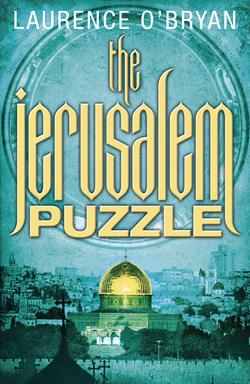Читать книгу The Jerusalem Puzzle - Laurence O’Bryan - Страница 27
22
ОглавлениеThe man had slicked-back silvery grey hair and a big pale face. He wore gold-rimmed glasses, and looked fifty-
something.
‘Heh, who are you?’ he asked, with a German accent.
‘We’re here to have a look at the dig. I was a colleague of Max Kaiser’s. I’m Sean Ryan, from the Institute of Applied Research in Oxford. This is my colleague, Isabel Sharp. A professor from Hebrew University is on his way down. He was Max’s reference to get on this dig.’
He rubbed his forehead. ‘We were expecting visitors after what happened to Max. It shocked us all. I’m Dieter Mendhol from the University of Dusseldorf. My colleague, Walter Schleibell, is below.’
We followed him down the stairs. The floor below was a totally different scene. The walls were covered in yellowing plaster. One wall had faded wall paintings, the sort that you’d see at Pompeii, with toga clad people in stylised poses.
A tingle of excitement ran through me. This was the real thing; a room that had been used almost two thousand years ago. Contemporaries of Christ and Caesar might have been here.
There were niches in the walls, where you could put busts. And the floor was whiter than the one above, smoother too. It looked as if it was made out of a similar sandstone as used in other parts the building, but from a different source, from a higher quality quarry.
Another Germanic-looking man, of the same vintage as Dieter, and wearing the same type of pale sand-coloured trousers and matching shirt, was standing by the far wall with his hands on his hips. He nodded steadily as we came down.
Introductions were made. We all shook hands. I gave them my card. Each of them examined it. I told them their colleague up above had allowed us in for a quick visit and the reason why. They looked at each other, then shrugged their shoulders.
‘This is really something down here,’ I said.
‘Ja, it certainly is. First century is what we think,’ said Dieter. ‘Late Herodian era. Everything points to it. We’ll be presenting a paper on the discovery, of course, and we’ll include carbon dating analysis to back up our judgement. That will prove it all, for sure.’
‘The History Channel will give you a whole series.’
He shrugged, as if he didn’t care.
‘How many rooms have you found like this?’
‘Just this one and the one below.’
There was another hole, a jagged one, right in the far corner. A blue plastic sheet and some rolls of wide black plastic tape lay near it. Were they covering the hole at times?
‘You’re afraid of contamination?’
‘Ja, moisture in particular. The rooms have been airtight for a long time. The moisture gets in at night as the temperature in the air above us goes down. We seal the lower floor as tightly as we can. Come, have a look.’ He sounded keen to show their find off.
Beside the hole there were two stacks of see-through plastic boxes. They were all about a foot wide and six inches tall. Some of them, the pile on the left, had something in them; scraps of parchment, pieces of wood, a piece of marble. Each box was numbered. I looked down into the hole. The site that confronted me was extraordinary.
It looked like an ancient rubbish pit into which people had thrown the contents of several buildings. There were pieces of wood sticking up out of the mess, like whitened bones in an ancient charnel house.
Some of the pieces of wood looked like boards from shelves, others were carved intricately. I could see a lot of scrolls too, some were crushed, some were just fragments, but many were whole. Among the debris were pieces of masonry, broken bits of furniture. The whole lot of it covered the floor below completely. I couldn’t even make out how deep the pile of ancient rubbish was.
There was a shiny steel ladder leading down. I put my hand out to hold it.
‘We don’t want anyone else to go down there,’ said Dieter, quickly. ‘We had a problem a few weeks ago. We think our security was breached.’ He moved towards me and put a wide hand on top of the pile of boxes.
